The Article
Roksan’s Radius 7 turntable: a heart of glass?
6th July 2016

Releasing a new midrange turntable, toting its established Nima arm, Paul Rigby reviews the Roksan Radius 7
I first saw the Roksan Radius 7, in its rather glass-like flesh, at the last Sound & Vision show in Bristol in February of this year. Speaking to UK distributor, Henley Design’s Ralph Ward at the show, he explained that the deck, “Is a replacement for the Radius 5. There have been improvements over the previous turntable in a number of areas, principally including improved motor decoupling. The designers have also managed to source an acrylic for the chassis which has a glass effect. The price has increased a bit too. The arm is the Nima, which was originally on the Radius 5.”
Set-up of the turntable was relatively painless. Features of note include that motor assembly that utilises an electronic speed selection that has been sourced from the high-end RPM speed control from the Xerxes. A connected LED light shines blue for 33rpm or red for 45rpm which is more effective as a light show because of that high density, glass-like plinth.
I do have a couple of design quibbles. More irritations than major factors. Firstly, I would have liked to have seen the option to replace the mains cable for something rather more audiophile in the future. You’re stuck with a basic black example. Same story with the phono cables. Upgrading both would help this turntable a lot in sonic terms.
Next? Both the power button and the speed button are uncomfortably close to the belt. I can just see myself catching the belt as my finger leaves the button and pulling the belt off the outside of the pulley/platter. It’s frustrating enough to get the belt on in the first place without ‘enjoying’ a re-run every time you turn the turntable on and off.
The second issue is the arm. I used a Benz Glider as my reference cartridge of choice. The cantilever of the Glider sticks out rather too much which just begs to be accidentally flicked or buried in a finger (an occurrence that has happened to me once before). Hence, caution is paramount. Yet the Roksan arm has no protective arm clip to keep the arm tube in place. This arm is waiting for accidents to happen, therefore. A stray hand here, a wayward moving finger there…
These are simple issues to fix but that fact that they are all crammed onto one turntable is like operating an unexploded bomb at times.
SOUND QUALITY
I began the sound test with psyche rock action from a group that used to be The Action, actually, but transformed themselves into Mighty Baby, combining a West Coast vibe with beat origins to form a psyche rock of sorts. This self-titled, 1968 LP was a touch compressed so offered the Roksan a challenging edge.
And that compression was there, the Roksan didn’t waste time trying to hide the fact, so there was no attempt to colour the sound or bathe it in warmth to hide it, the Roksan provided an honest playback. On a more proactive basis, though, I was very impressed with the vocal delivery on the track, House With No Windows. The lead vocal was joined by a backing voice to form an effective harmony but both offered a superbly moulded and formed delivery. There was a real and impressive degree of personality to both.
Similarly, bass, while not blooming or providing a false ‘massy’ output, was precise yet punchy while secondary percussion from tambourine offered a detailed and treble-infused ringing feedback that added a welcome extension to the arrangement. I was also happy to hear the output of the Hammond organ which I found pleasantly meticulous for a turntable at this price point.
For a contrast and a rather lushy orchestrated soundtrack, I turned to Ennio Morricone and Metti, Una Sera A Cena with some appealing gentle scatting from Edda Dell’Orso. The title track was beautifully clear and clean in its aspect and so airy and light, I thought that the strings were about to take off above the wide and expansive soundstage.
More specifically, I was pleased to hear a touch of metallic reverb on every strike of the glockenspiel, later in the LP, while the excellent transient response added a rounded and immediate strike/reaction to this sunny and cheerful instrumental interlude while piano was both expressive yet restrained.
There was no indication of any blooming in the upper mids or any smearing to mask detail, the Roksan allowed each instrument the freedom to express itself.
Turning to classical and Beethoven’s Moonlight Sonata via the magical fingers of Arthur Rubinstein, surely one of the greatest classical pianists of the 20th century. Here, as our tests showed, the Radius 7 attempted to ruin the maestro’s peerless reputation with, on more sustained piano notes towards the end of the first movement, slight but ‘visible’ wavering that resulted from speed stability issues.
Moving to Bruce Hornsby & The Range and the album, Scenes From The Southside from 1988 and the first track, Look Out Any Window, this track highlighted the Hornsby piano which was big, bold and richly formed with a swathe of detail that the Roksan found easy to highlight and present in an ordered and focused manner. The soundstage was also notable for being layered and positioned to draw you into the musicality of the rolling rhythms. While the track provided a ‘period’ eighties production sound, the Roksan added a welcome polish and a sense of clarity that laid bare the busy soundstage.
CONCLUSION
Although arriving with a few design quirks, the bottom line of this or any turntable is the sound quality and, in that category, the Roksan Radius 7 doesn’t fail. Far from it, the Radius 7 is an impressive performer that gives space and air for detail to fall from it in bucket loads. Offering a balanced performance, the Radius 7 is a strong contender at this price point.
ROKSAN RADIUS 7
Price: £1,900
Tel: 01235 511 166
To see the turntable specifications, click HERE.
Good: midrange insight, open presentation, focus, clarity
Bad: control button placement, no arm tube clip, speed variation
RATING: 7
SYSTEM USED
Origin Live Sovereign turntable
Origin Live Enterprise 12” arm
Transfiguration Proteus cartridge
Koetsu Black cartridge
Icon Audio PS3 phonostage
Aesthetix Calypso pre-amp
Icon Audio MB 845 Mk.II monoblocks
Quad ESL-57 speakers with One Thing mods
Vertex AQ & Atlas cabling


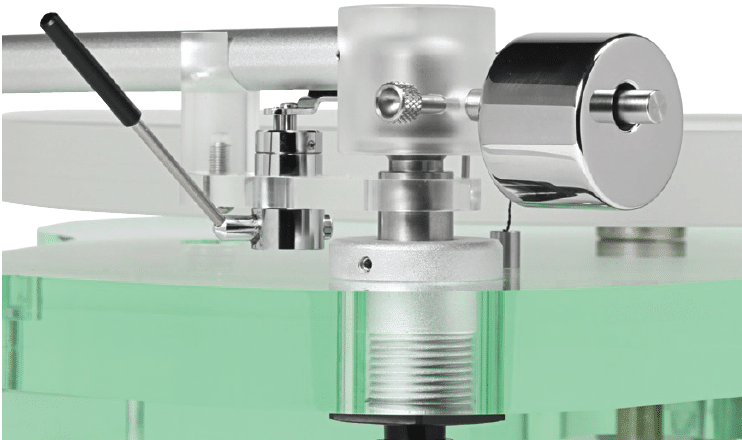
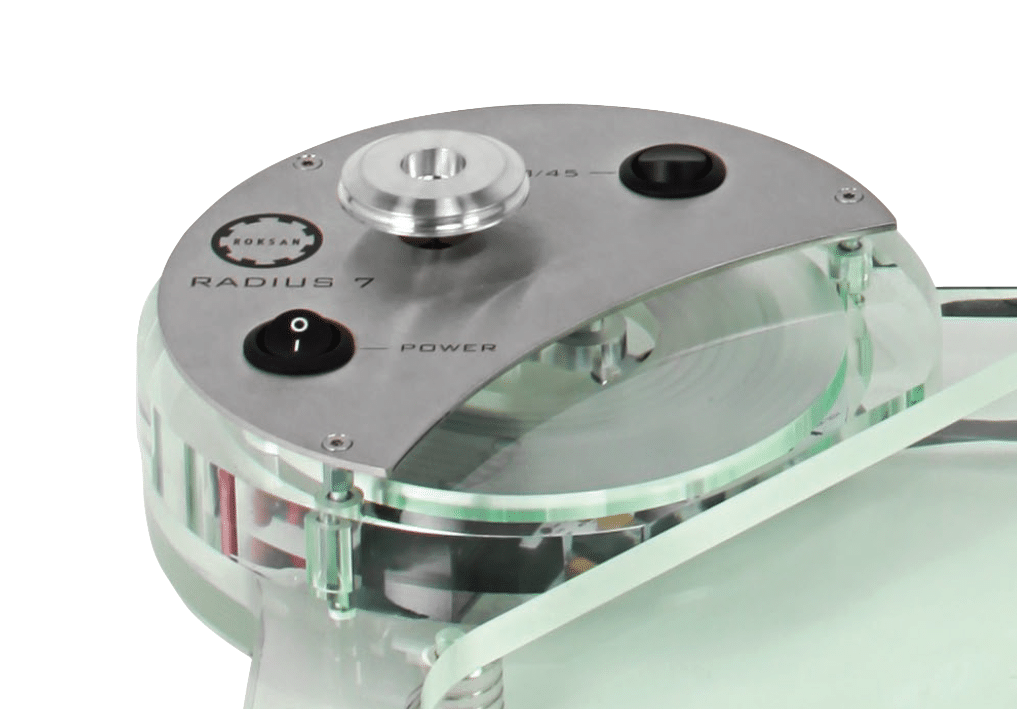
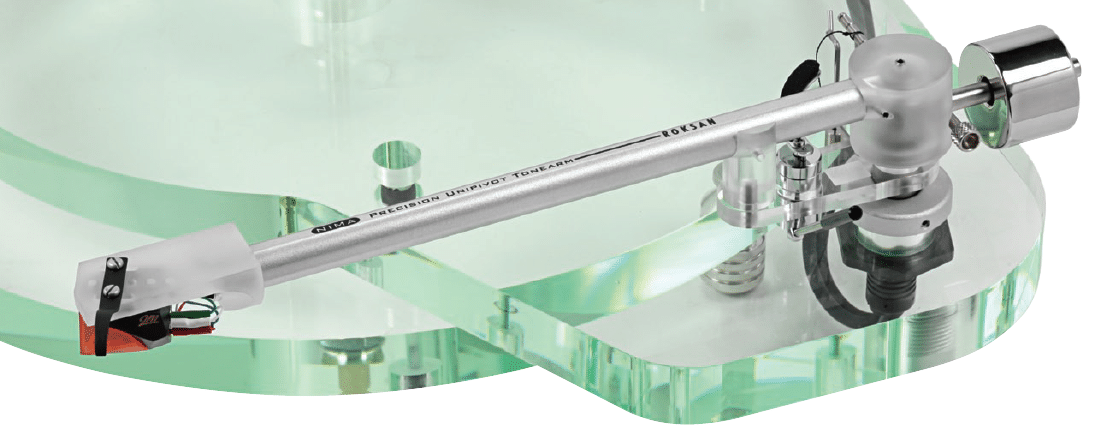
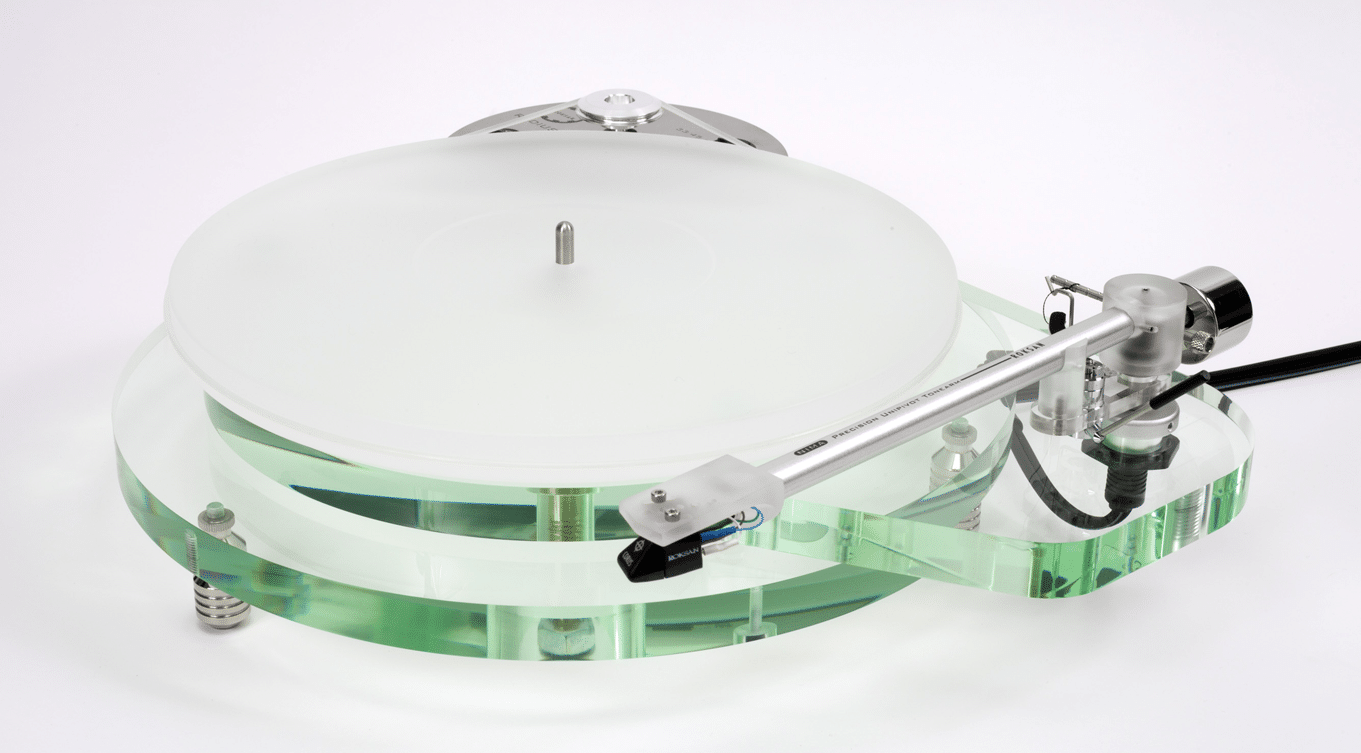

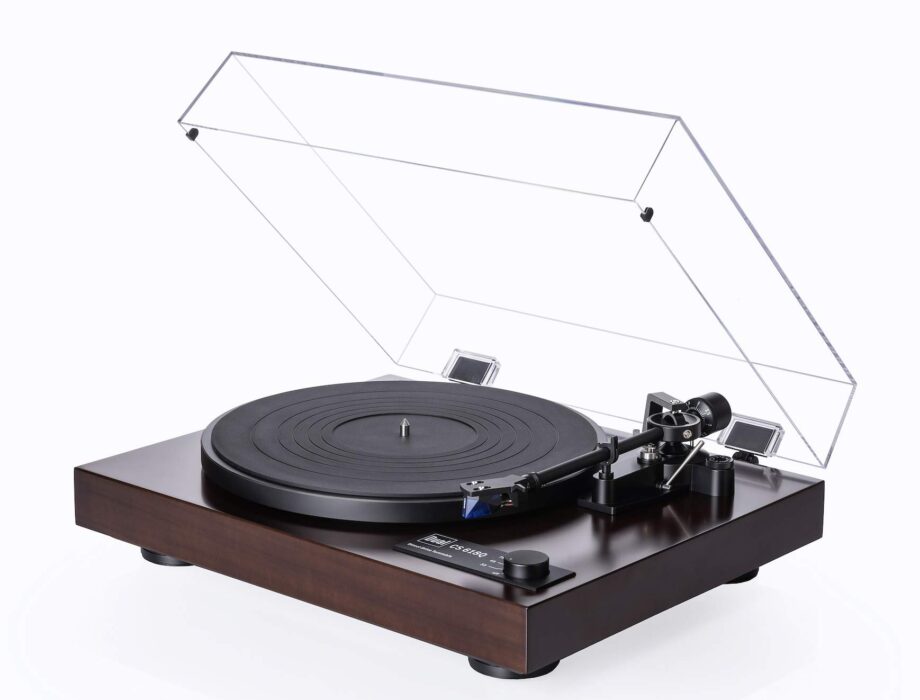
Hi,
Just read your excellent review of the Roksan turntable. I have just one remark about this review. And that’s how can you possibly give this turntwble a 7 if there are speed issues present? I mean, if a turntable reveals its flaws in this way, it is not a good turntable. Wow and flutter and speed variations in terms of audible stability problems make for a totally unusable product. A pity as I at first glance had this product on my wish list. I think I stick to my two trusty SL-1200’s which show nothing of the kind of troubles the Roksan seems to suffer from. A traditional deck with a solid plinth like the SL series all have and a good dust cover to protect the delicate parts of a turntable are essential. So your review told me not to buy this product. A matter of reading between the lines. Good and honest advice though with a small doubt about the total valuation that is. Not a 7. Novices in the field of turntables know not enough about turntables in the first place. Audible speed issues of ANY kind are unbearable, certainly after you heard them. So I guess I’m spoiled having two SL’s………!
Kind regards from The Netherlands.
Willem Koekebacker
Hi Willem – many thank for your note. I’m very happy that you made this point because it’s a very important one and deserves further explanation.
As with anything in hi-fi there’s a lot of ‘it depends’ when you consider components and the testing of the same. For the speed tests, the majority of the music involved was fine. I could sense no issues at all. If I had not turned to this one classical piece, I would not have even mentioned the issue. Hence, for 90% of all analogue users, the Roksan is a superb deck and should be thoroughly recommended.
There are certain audiophile listeners who adore classical music and are very particular about it, though. What I did was to give the Roksan the most severe of speed tests. That is, the classical piano in ‘sustain’. That is, the last note has been hit and you hear the tail of the note disappearing. It’s at this point and this point only that I had an issue. Maybe I should have clarified the point in the review and so I thank you for allowing me to do it now. Hence, unless you are a real classical music fan, keep the Roksan on your demo list 🙂
Hello Paul, I’ve come here at your suggestion in response to my pondering on Twitter about a successor to my Radius 5.2, and this seemed the best place for the conversation.
I like some things about the Radius very much: the sound, for one thing (I’m using an Ortofon 2M Bronze, which I like very much). And it looks awesome.
On the other hand: the belt falls off, apparently unprompted by anything at all, and is tricky to replace. Swapping the belt by hand to change speeds is a nuisance. The power switch is (as you’ve noticed) uncomfortably close to the belt. And most of all: I just can’t get on with the unipivot arm.
When I listen to records, I want to feel like I do when I’m drinking a really good mug of tea. Trouble is, living with a Radius is like finding no mugs in the cupboard, just the most delicate bone china cups and saucers. It’s not the relaxing experience I’m looking for.
So, where next? Technics SL1200GR? ProJect Experience 9? Or … ? I don’t want to downgrade, but I’m happy to stay at the same level for a more comfortable drive. Rest of the system: Pro-Ject PhonoBox (also due an upgrade), Naim Nait 5si, Acoustic Energy Radiance 2.
Nice to see you here Jim. First question – what’s your budget?
Also, if you can, give me a budget for the phono box – there’s no point in even buying something similar to the Radius if you’re going to keep that phono amp. It’s a real bottle neck.